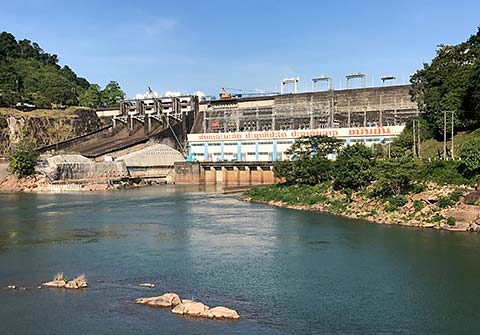USAID and NREL Curate Resilience Solutions for International Power System Planners

When a power system fails, consequences can be catastrophic. At-risk communities may be left without access to lifesaving medical resources, while sanitation, manufacturing, and other critical services may be rendered powerless and unable to function. If a nation or region is geographically isolated or otherwise poorly equipped to respond, recovery time can take even longer.
With that context in mind, the USAID-NREL Partnership developed the Resilient Energy Platform to assist developing nations with identifying power system vulnerabilities and planning resilient, sustainable, and secure power systems through the use of resources, data, tools, and direct technical assistance.
"We continue to hear stories of power systems experiencing different types of failures or interferences related to extreme weather events, technical issues, or cybersecurity breaches," said Sadie Cox, senior analyst in NREL's Strategic Energy Analysis Center and lead for the Resilient Energy Platform. "The USAID-NREL Partnership builds our technical platforms based on demand from several countries for support in a particular area. In this case, it made sense to develop the Resilient Energy Platform to respond to that common need."
One type of resource the platform provides is its "Quick Reads" series. These reports range from two to 10 pages and focus on key topics that support power system resilience, such as planning, finance, and cross-border power trade. While the quick reads do not require excessive time to process or deep technical understanding, they offer substantial, relevant information and analysis. Many of the quick reads link to other resources where the topics are detailed further.
The quick reads series has also been adapted into interactive webinars. The team recently published Cybersecurity and Distributed Energy Resources, which was accompanied by two cybersecurity-specific webinars. The first webinar introduced building blocks to support cybersecurity in the power sector, while the second focused on NREL's Distributed Energy Resources Cybersecurity Framework (DERCF) and how distributed energy resources pose challenges and opportunities to the cybersecurity governance of power systems.
"We consciously chose to create resources, like quick reads and webinars, that are digestible for international decision makers who want a sense of the most cutting-edge areas of interest related to resilience, something where they could get a high-level view of a particular topic, but also have a list of other resources to learn about it in detail," Cox continued.
Unique Needs Drive Customized Technical Assistance

Since power system threats continue to grow with the onset of new technologies and extreme weather events, the Resilient Energy Platform team will continue this type of technical assistance with countries that express interest in targeted engagement.
"There is no one-size-fits-all solution to energy resilience," Cox said. "The needs of a small island nation will be different from a large nation or a land-locked nation. When our team works with partner countries to develop resilience action plans, the assessments are always tailored to their particular power system needs."
Last Updated May 28, 2025
